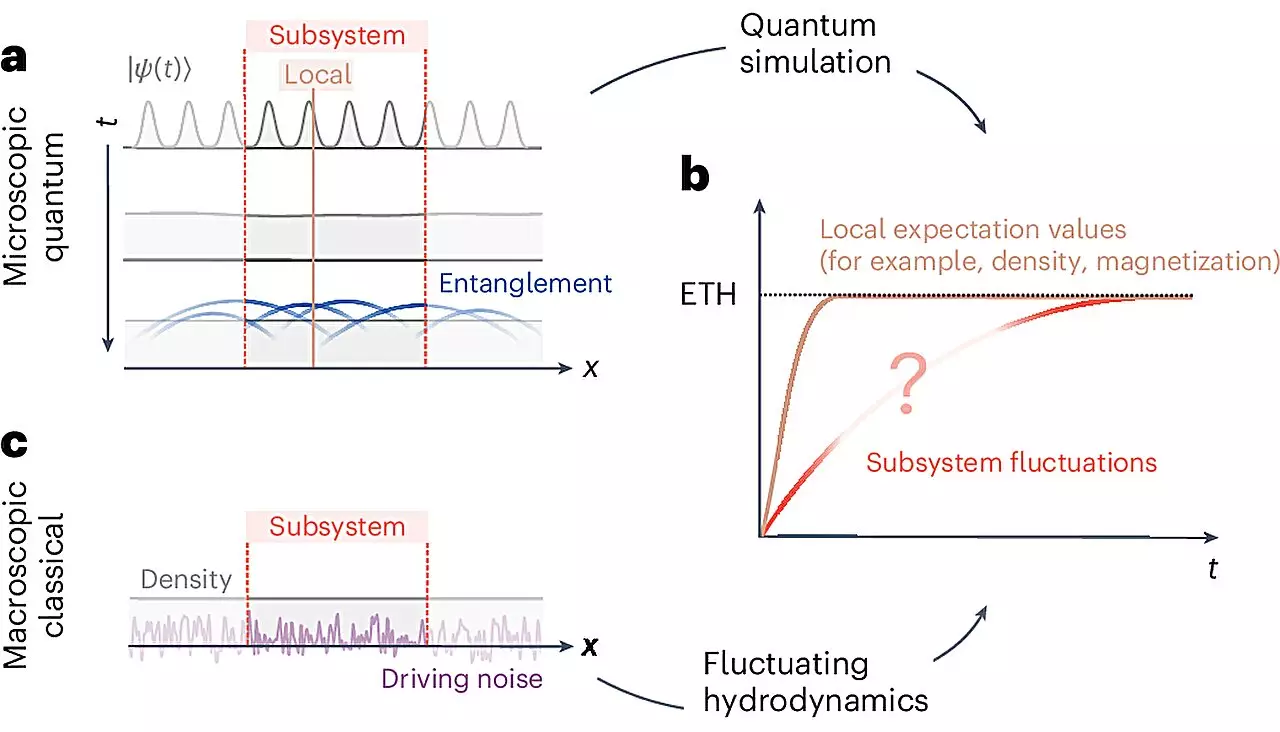The world of quantum physics is often viewed as highly complex and chaotic, with systems consisting of interacting small particles posing various challenges for researchers. However, a recent study led by Professor Monika Aidelsburger and Professor Immanuel Bloch from the LMU Faculty of Physics suggests that some of these systems can be described using simple diffusion equations. Published in the journal Nature Physics, the research provides insights into how quantum many-body systems may exhibit macroscopic behaviors that can be captured through a straightforward theoretical framework.
Traditionally, understanding the behavior of particles in a system involves delving into the intricate physics of individual particles and their interactions. However, the study by Aidelsburger and Bloch’s research team introduces a different approach based on hydrodynamics. Julian Wienand, a doctoral candidate involved in the study, highlights that by focusing on macroscopic properties rather than microscopic details, it is possible to simplify the description of complex systems. This shift in perspective allows researchers to analyze the overall flow behavior of a system without the need to consider every minute particle interaction.
One of the key findings of the study is the concept of fluctuating hydrodynamics (FHD), which accounts for random fluctuations in particle movements. Wienand explains that these fluctuations, akin to Brownian motion, can be described as white noise within the framework of FHD. Surprisingly, the FHD theory suggests that the behavior of a system can be influenced by a single parameter – the diffusion constant – even in systems with complex and chaotic microscopic dynamics. This insight opens up new possibilities for simplifying the macroscopic description of quantum many-body systems.
While the FHD approach shows promise in describing chaotic classical systems, its applicability to quantum systems raises intriguing questions. Quantum particles exhibit unique phenomena such as uncertainty and entanglement, which defy traditional intuition and complicate the analysis of their interactions. Despite these challenges, the research team decided to investigate whether chaotic quantum systems could also be understood through an FHD framework.
To explore the behavior of chaotic many-body quantum systems, the researchers conducted experiments using ultracold cesium atoms in optical lattices. By monitoring the evolution of the system over time and measuring density fluctuations, the team was able to observe how FHD could qualitatively and quantitatively describe the system dynamics. This experimental evidence suggests that chaotic quantum systems, despite their microscopic intricacies, may indeed exhibit macroscopic diffusion processes similar to Brownian motion.
The study by Aidelsburger, Bloch, and their research team sheds light on the potential simplicity underlying chaotic quantum systems. By utilizing diffusion equations and FHD theories, researchers can gain valuable insights into the behavior of complex systems without the need to delve into microscopic details. This innovative approach paves the way for a deeper understanding of quantum many-body systems and opens up new possibilities for exploring the enigmatic world of quantum physics.


Leave a Reply